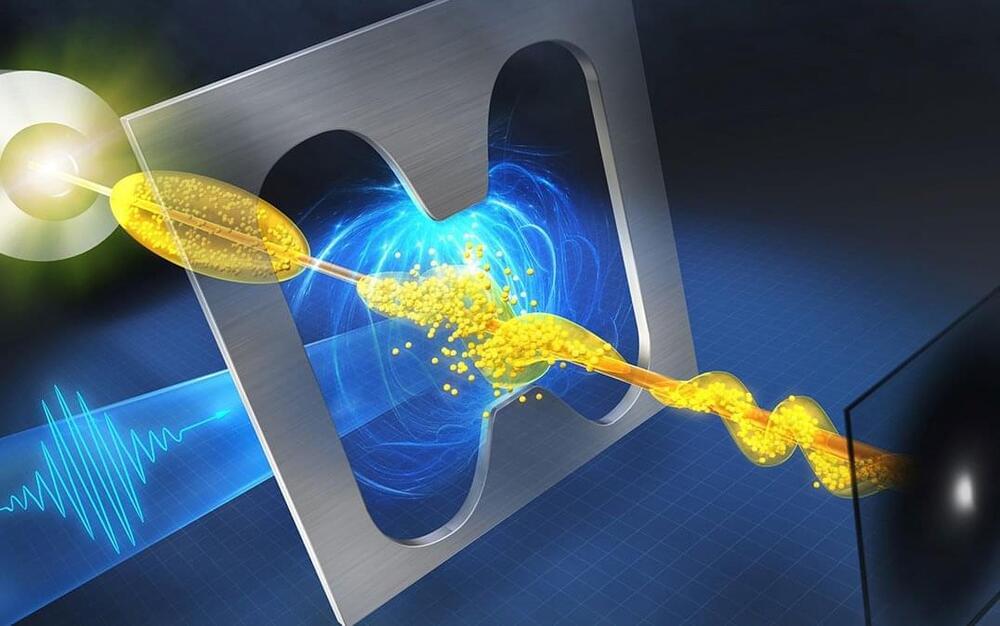Researchers from the University of Tsukuba have shown how adding a tiny resonator structure to an ultrafast electron pulse detector reduced the intensity of terahertz radiation required to characterize the pulse duration (ACS Photonics, “Streaking of a Picosecond Electron Pulse with a Weak Terahertz Pulse”).
To study proteins—for example, when determining the mechanisms of their biological actions—researchers need to understand the motion of individual atoms within a sample. This is difficult not just because atoms are so tiny, but also because such rearrangements usually occur in picoseconds—that is, trillionths of a second.
One method to examine these systems is to excite them with an ultrafast blast of laser light, and then immediately probe them with a very short electron pulse. Based on the way the electrons scatter off the sample as a function of the delay time between the laser and electron pulses, researchers can obtain a great deal of information about the atomic dynamics. However, characterizing the initial electron pulse is difficult and requires complex setups or high-powered THz radiation.
